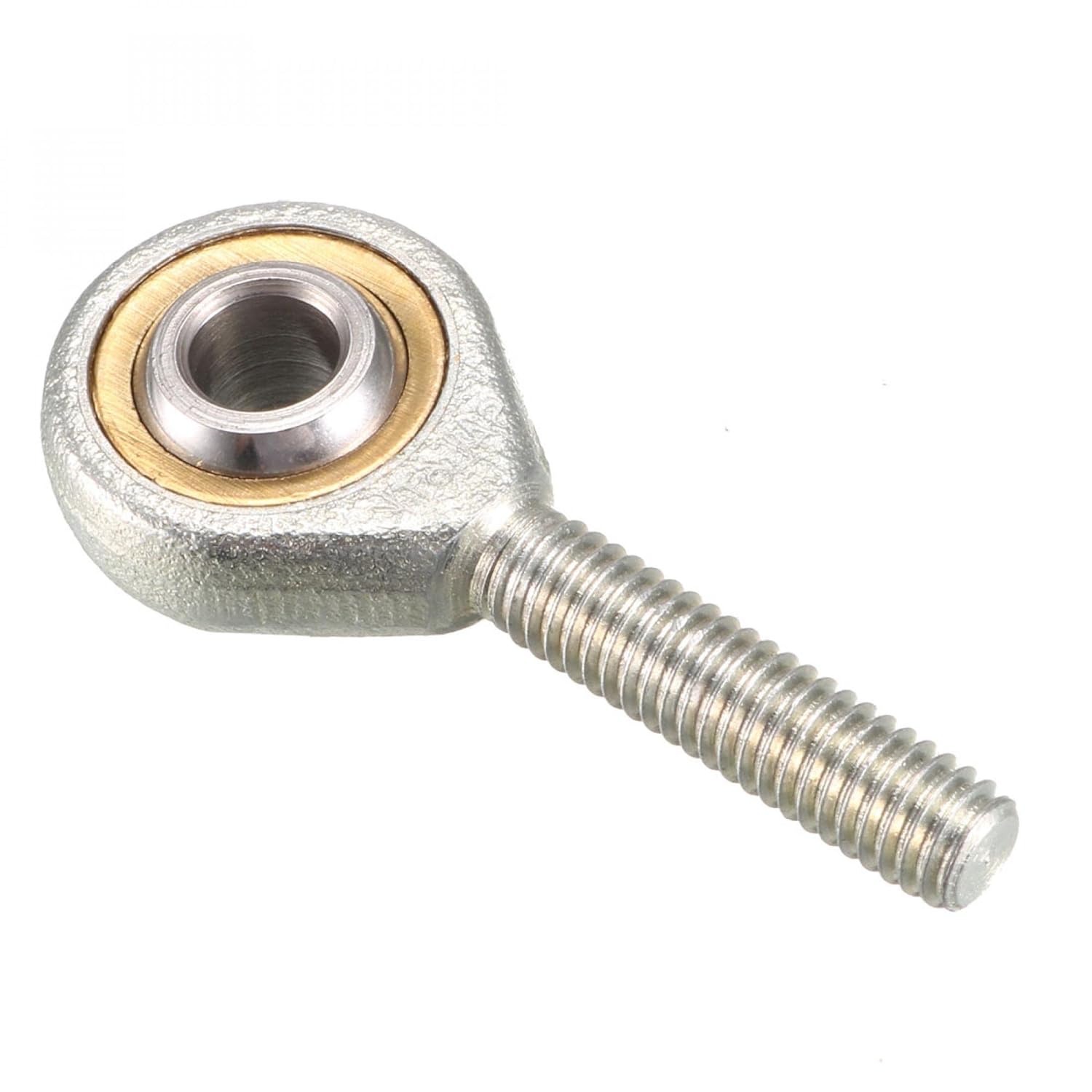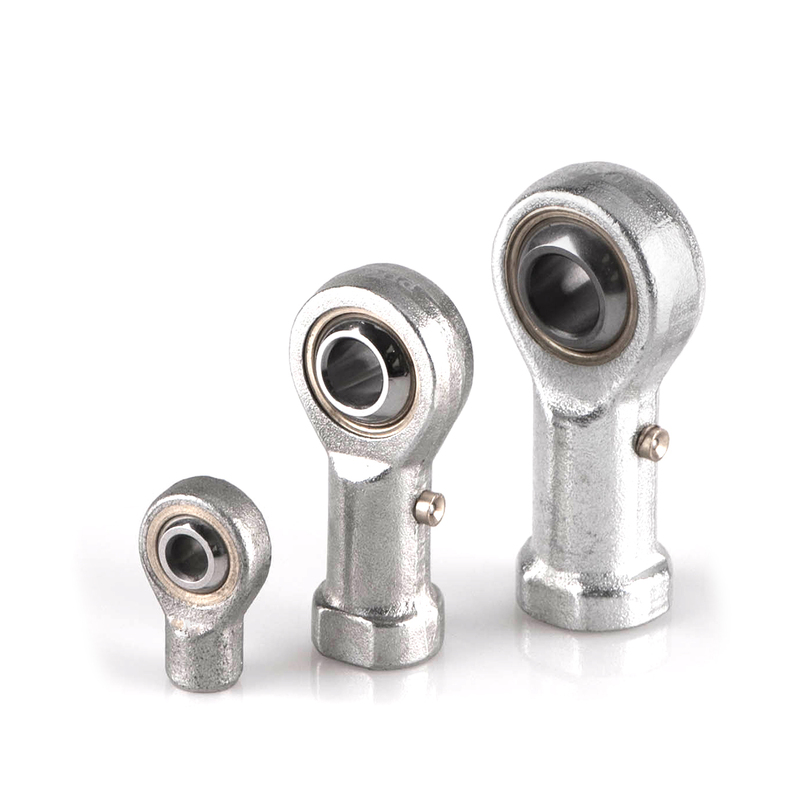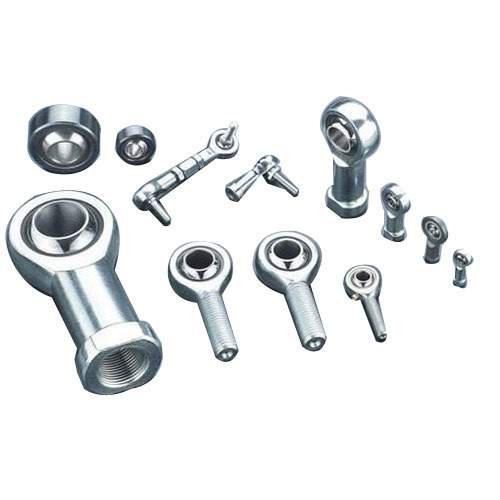
Differences Between Male and Female Threaded Rod End Bearings
Male and female threaded rod end bearings differ in their design and applications:
Male Threaded Rod End Bearings:
– Male rod end bearings have external threads on the shank or body of the bearing.
– They are typically used in applications where the bearing is mounted to a stationary component, and the threaded shank extends to connect with a mating part (e.g., a linkage or control arm).
– Male rod end bearings allow for easy adjustment or fine-tuning of the connection.
– These bearings are suitable for applications requiring controlled movement or positioning, where the bearing’s external threads facilitate precise adjustments.
Female Threaded Rod End Bearings:
– Female rod end bearings have an internal (female) threaded bore inside the housing.
– They are used when a bolt, stud, or shaft with external threads needs to be connected to the bearing’s housing.
– Female rod end bearings are often employed in applications where the bearing needs to rotate around a fixed shaft or bolt, providing articulation and misalignment capabilities.
– These bearings allow for the attachment of a variety of external components, making them versatile for different applications.
The choice between male and female threaded rod end bearings depends on the specific requirements of the application, including whether the bearing needs to be attached to a stationary part or connected to an external threaded component and the level of adjustability and articulation needed.

Enhancing Off-Road Vehicle Suspension with Rod End Bearings
Rod end bearings play a crucial role in enhancing the performance of suspension systems in off-road vehicles. Here’s how they contribute:
1. Articulation and Flexibility: Off-road vehicles encounter challenging terrains with varying obstacles. Rod end bearings provide articulation, allowing the suspension components to move independently. This flexibility ensures that each wheel can adapt to the terrain’s irregularities, improving traction and stability.
2. Load Distribution: In off-road conditions, vehicles often experience uneven loads due to rough terrain. Rod end bearings help distribute these loads across the suspension components, preventing excessive stress on any single part and reducing the risk of damage or failure.
3. Durability and Strength: Off-road environments are harsh, and suspension systems endure significant stress. Rod end bearings are designed for high-stress applications, providing the necessary strength and durability to withstand rugged conditions and maintain peak performance.
4. Precision Handling: Off-road vehicles require precise handling to navigate challenging terrain effectively. Rod end bearings maintain proper alignment, ensuring that the suspension geometry is consistent. This precision handling is vital for maintaining control over the vehicle, even on rough paths.
5. Reducing Vibration and Impact: Off-roading often involves encountering vibrations and impacts from uneven surfaces. Rod end bearings act as damping elements, reducing the transmission of these vibrations to the vehicle’s chassis. This helps improve ride comfort and minimizes the risk of structural damage.
6. Adjustable Suspension: Some off-road vehicles feature adjustable suspension systems that allow users to adapt to different terrains. Rod end bearings are integral to these systems, providing the flexibility needed to make real-time adjustments for optimal performance.
7. Maintenance and Serviceability: Off-road vehicles require regular maintenance, and the serviceability of suspension components is crucial. Rod end bearings are designed for ease of maintenance, making it simpler to inspect, lubricate, and replace them when necessary.
8. Versatility: Off-road vehicle suspension systems come in various designs. Rod end bearings are versatile components that can be integrated into different suspension types, including independent front suspensions, solid axle suspensions, and multi-link suspensions.
In summary, rod end bearings significantly enhance the performance of suspension systems in off-road vehicles by providing articulation, load distribution, durability, precision handling, vibration reduction, adjustability, and ease of maintenance. These features collectively ensure that off-road vehicles can tackle challenging terrains with confidence and reliability.

Impact of Proper Lubrication on Rod End Bearings
Proper lubrication is crucial for enhancing the performance and extending the longevity of rod end bearings. Here’s how it impacts these aspects:
1. Reduced Friction: Lubrication creates a film between moving parts, reducing friction. This minimizes wear and heat generation, leading to smoother and more efficient operation of the rod end bearing.
2. Wear Prevention: Lubrication helps prevent wear and surface damage on bearing components, particularly the ball and raceway. This is vital for the long-term durability of the bearing.
3. Corrosion Resistance: In applications exposed to moisture or corrosive substances, lubrication provides a protective barrier, preventing rust and corrosion on the bearing’s surfaces. This is especially important in outdoor or marine environments.
4. Noise Reduction: Adequate lubrication reduces noise and vibration in the bearing. This is important for applications where noise levels must be minimized, such as in the aerospace or medical industries.
5. Temperature Control: Lubrication helps dissipate heat generated by friction. Effective temperature control prevents overheating, which can lead to premature bearing failure.
6. Seal and Shield Function: Lubrication also works in conjunction with bearing seals and shields to keep contaminants out. It maintains a clean and contaminant-free internal environment, further increasing the bearing’s longevity.
7. Longevity: Proper lubrication significantly extends the service life of rod end bearings. Regular maintenance and relubrication schedules are essential for maximizing the bearing’s operational lifespan.
8. Efficiency: Lubrication contributes to the overall efficiency of the bearing, ensuring that it operates at peak performance levels, even under heavy loads or misalignment conditions.
9. Performance Consistency: Adequate lubrication helps maintain consistent performance over time. This is especially important in critical applications where performance fluctuations could lead to safety or quality concerns.
It’s important to use the lubricant recommended by the bearing manufacturer and follow their guidelines for lubrication intervals. Over-lubrication can be as detrimental as under-lubrication, so maintaining the right balance is essential.
Regular inspections and maintenance routines should be established to monitor the lubrication condition and reapply lubricant as needed. This proactive approach ensures that rod end bearings operate effectively, offering reliability and a longer service life.


editor by CX 2024-04-17